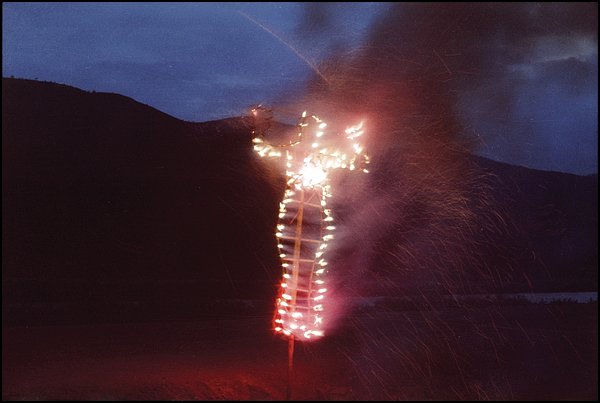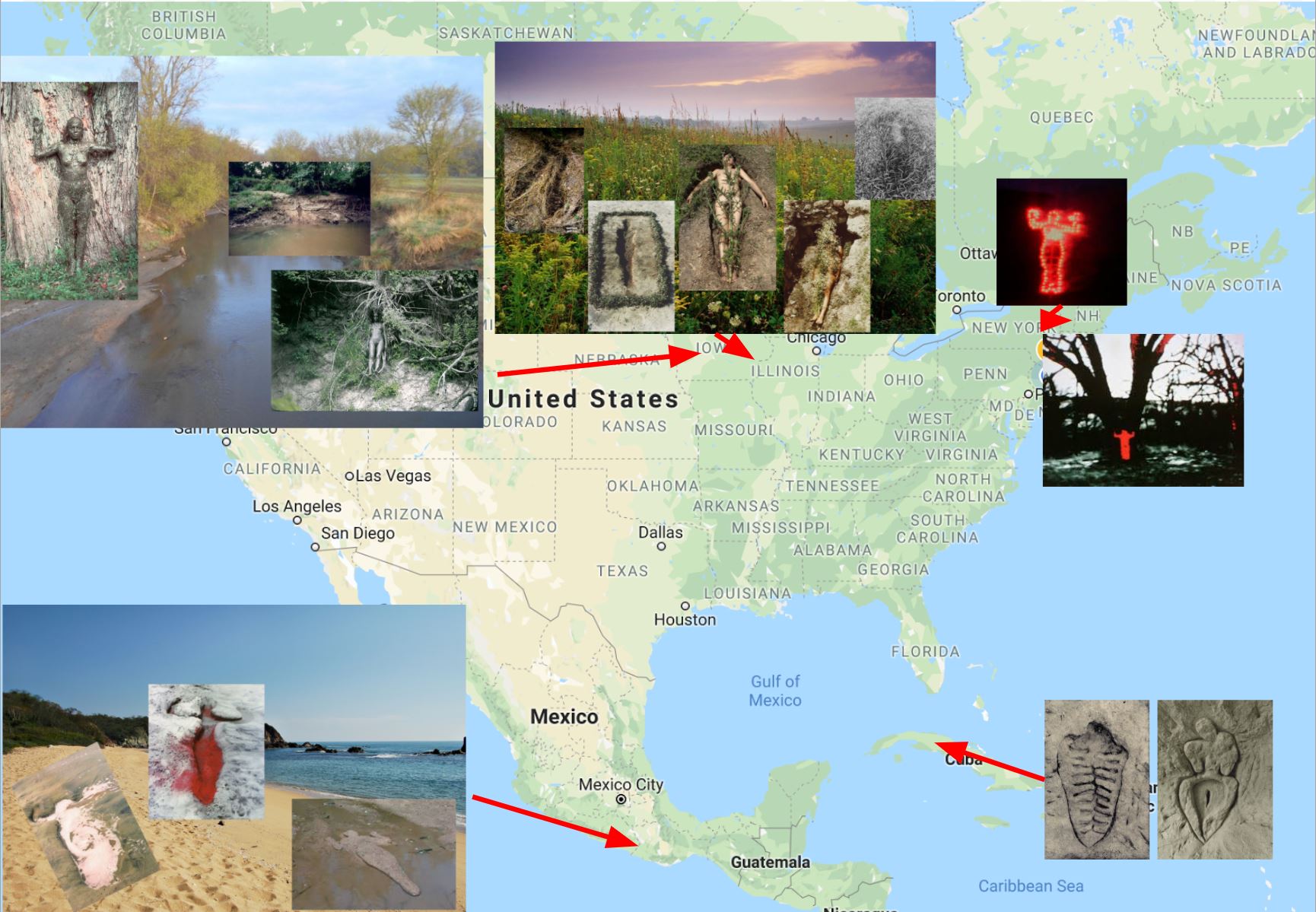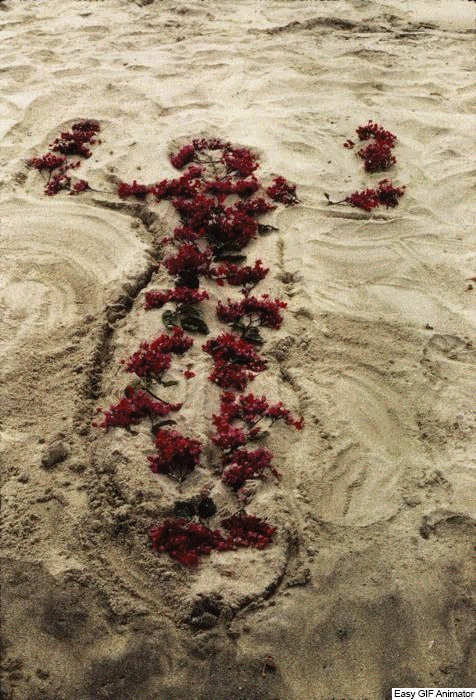A Geography of Siluetas
Ana Mendieta was born 1948 in Havana, Cuba and fled to the United States at age 12 as part of Operation Peter Pan with her sister, Raquelin. 
 For five years the two lived in foster homes in Florida and Iowa until their mother and brother were able to join them in Iowa. Ana attended the University of Iowa and received a BA in French and Art, and an MFA in Intermedia studies. In her time at the university, she was a prolific creator of art and films. Her early works experimented with gendered forms, such as her facial transplant series wherein a classmate shaved his beard and she affixed the hairs to her face to create varying shapes of facial hair and another where she used a sheet of plastic to mold her body and face into distinctly unfamiliar, unfeminine, forms. However, her art began to include violent elements inspired by sexual assault on campus.
For five years the two lived in foster homes in Florida and Iowa until their mother and brother were able to join them in Iowa. Ana attended the University of Iowa and received a BA in French and Art, and an MFA in Intermedia studies. In her time at the university, she was a prolific creator of art and films. Her early works experimented with gendered forms, such as her facial transplant series wherein a classmate shaved his beard and she affixed the hairs to her face to create varying shapes of facial hair and another where she used a sheet of plastic to mold her body and face into distinctly unfamiliar, unfeminine, forms. However, her art began to include violent elements inspired by sexual assault on campus.
These themes were spurred by the assault and murder of Sarah Ann Ottens. 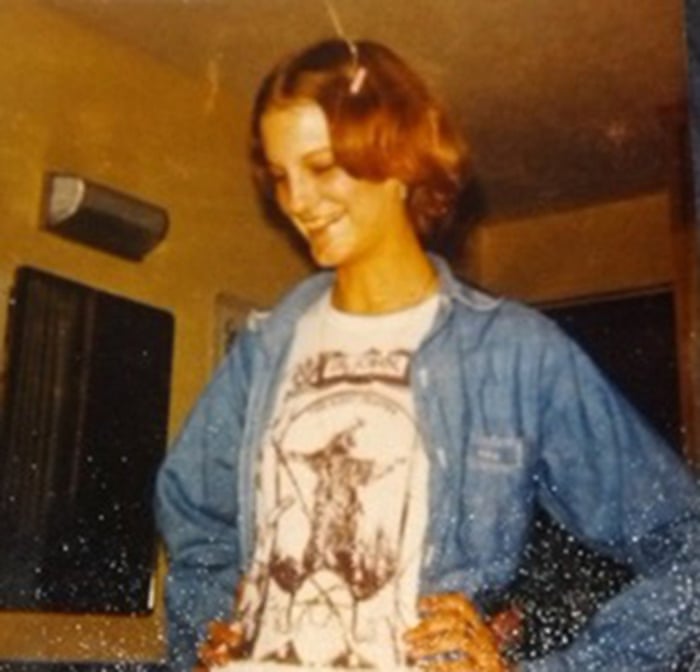 In 1973 Sarah was a student at the university studying nursing who stayed behind on campus for her spring break when she was found naked, beaten and bleeding, having been raped to death. While Ana may never have known the details surrounding the murder and the case, it is imperative to mention the racial dynamics surrounding the arrests and convictions made in prosecuting the murder.
In 1973 Sarah was a student at the university studying nursing who stayed behind on campus for her spring break when she was found naked, beaten and bleeding, having been raped to death. While Ana may never have known the details surrounding the murder and the case, it is imperative to mention the racial dynamics surrounding the arrests and convictions made in prosecuting the murder.
The news of Otten’s death spread throughout campus and reached Ana. Shortly after, she began to create works that explored violence, particularly as enacted on women’s bodies. Ana sent invitations to her friends and artistic mentors to come to her apartment. They arrived to a slightly open apartment door- the same way that Sarah’s body had been discovered.  When the door opened they found Mendieta tied to the table, naked from the waist down, with blood dripping down her back onto the floor. She stayed in this position for an hour while her friends eventually sat down to discuss the piece, noting with relief that a stranger had not found her tied up and taken advantage of the performance piece.
When the door opened they found Mendieta tied to the table, naked from the waist down, with blood dripping down her back onto the floor. She stayed in this position for an hour while her friends eventually sat down to discuss the piece, noting with relief that a stranger had not found her tied up and taken advantage of the performance piece.
This performance began a seminal theme in Ana’s work, her dealings with blood and violence would begin her playing with the female form-leading to the earth body art, such as her siluetas which remain a lasting aesthetic legacy. In 1973, the same year of Otten’s murder Ana staged a performance, of which no documentation remains, where she laid on a city street and pretended to be dead as strangers walked by. 
This work began a period of experimentation with animal viscera and blood, such as Untitled (Self-Portrait with Blood) and the short film Moffit Building Piece wherein Ana and Raquel left a pool of animal blood outside of a central apartment complex. The two filmed people’s reactions of horror, shock, and purposefully constructed ignorance. The piece is a commentary on the normalization of violence in Iowa City and the spectrum of reactions from the passerby mirror the reactions to public acts of violence such as Sarah Otten’s murder. Those who noticed reacted with horror and shock at the visibility of the crime, while others knew it to be part of the cultural landscape and stepped over the blood stain left behind.
Although Sarah’s story specifically does not seem to reappear in Ana’s work after her time at the university, the disposability of women’s bodies remains a theme. This violence, and the woman as part of the landscape, led to Ana’s creation of her siluetas-works where the form of a woman forms part of the landscape or burns brightly against its background.
These imprints show Ana grappling with the interplay between female invisibility and feminity as a source of natural divinity, which she explored through recreations of indigenous deities.Ana’s silueta series spanned three continents a decade of her tragically short career.
The violence that Ana’s art grappled with, the image of blood on a city street outside an apartment door that the created for the Moffit Building piece tragically foreshadowed the end of her life. In a scene mirroring one of her siluetas, Ana died on a New York City sidewalk. In the early morning of September 8, 1985, Ana Mendieta’s husband, Carl Andre, called 911 to report that she “went out” of their shared 34th flood window. Ironically, no photos were ever taken of her body. Despite evidence suggesting that Carl had pushed her, including reports from a neighbor of a woman screaming “No” and scratches on Andre’s face, Andre was acquitted of her murder three years later.
Ana’s death has created a retrospective lens for viewing her career, a neat way to package the life and death of this eccentric Cuban-American artist who made art, verging on the gory, that did not shy away from difficult or taboo topics.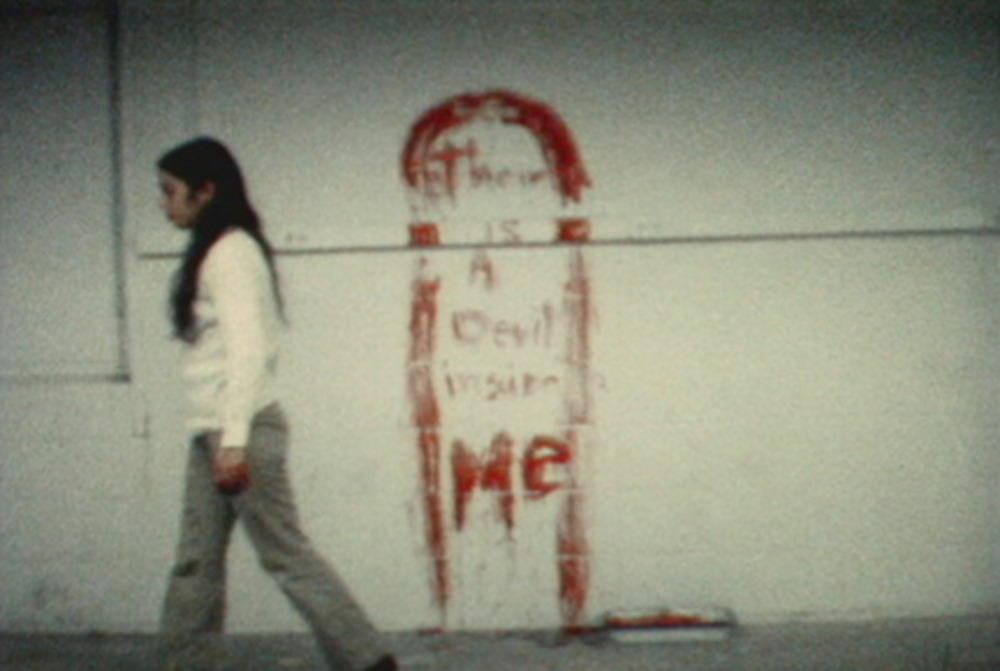 However, it is important to be careful when viewing Ana’s life in this backward manner, her dealings with violence and trauma were used to acquit Carl Andre of responsibility for her death.
However, it is important to be careful when viewing Ana’s life in this backward manner, her dealings with violence and trauma were used to acquit Carl Andre of responsibility for her death.
Even today, protestors and feminist art movements continue to fight to preserve Ana’s memory in the art world and to challenge galleries and museums that erase her legacy. Ana’s photographs, films, and sculptural works have been displayed in museums across the world, her art has left an indelible silhouette on the art world and her legacy extends into the modern discussion of sexual violence and women of color in art making.

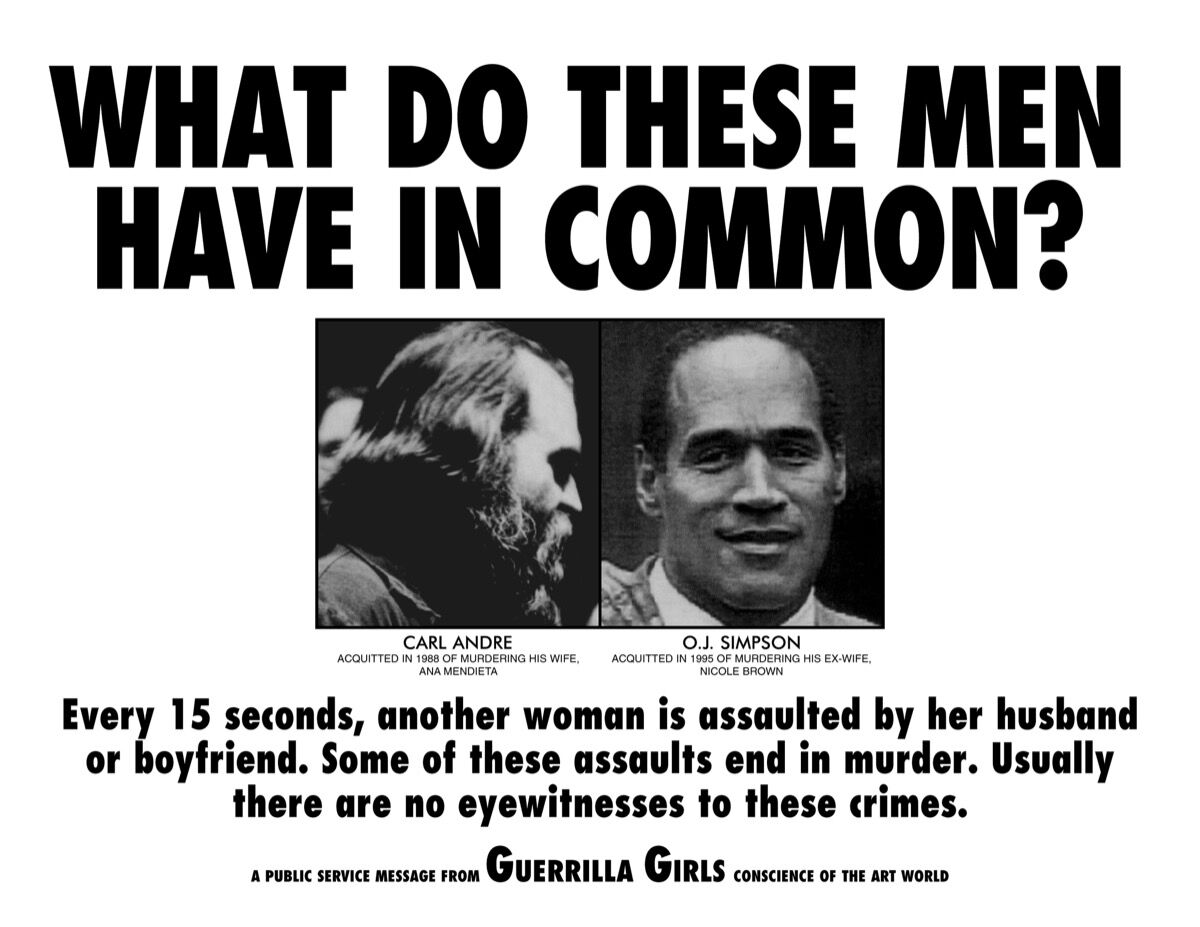
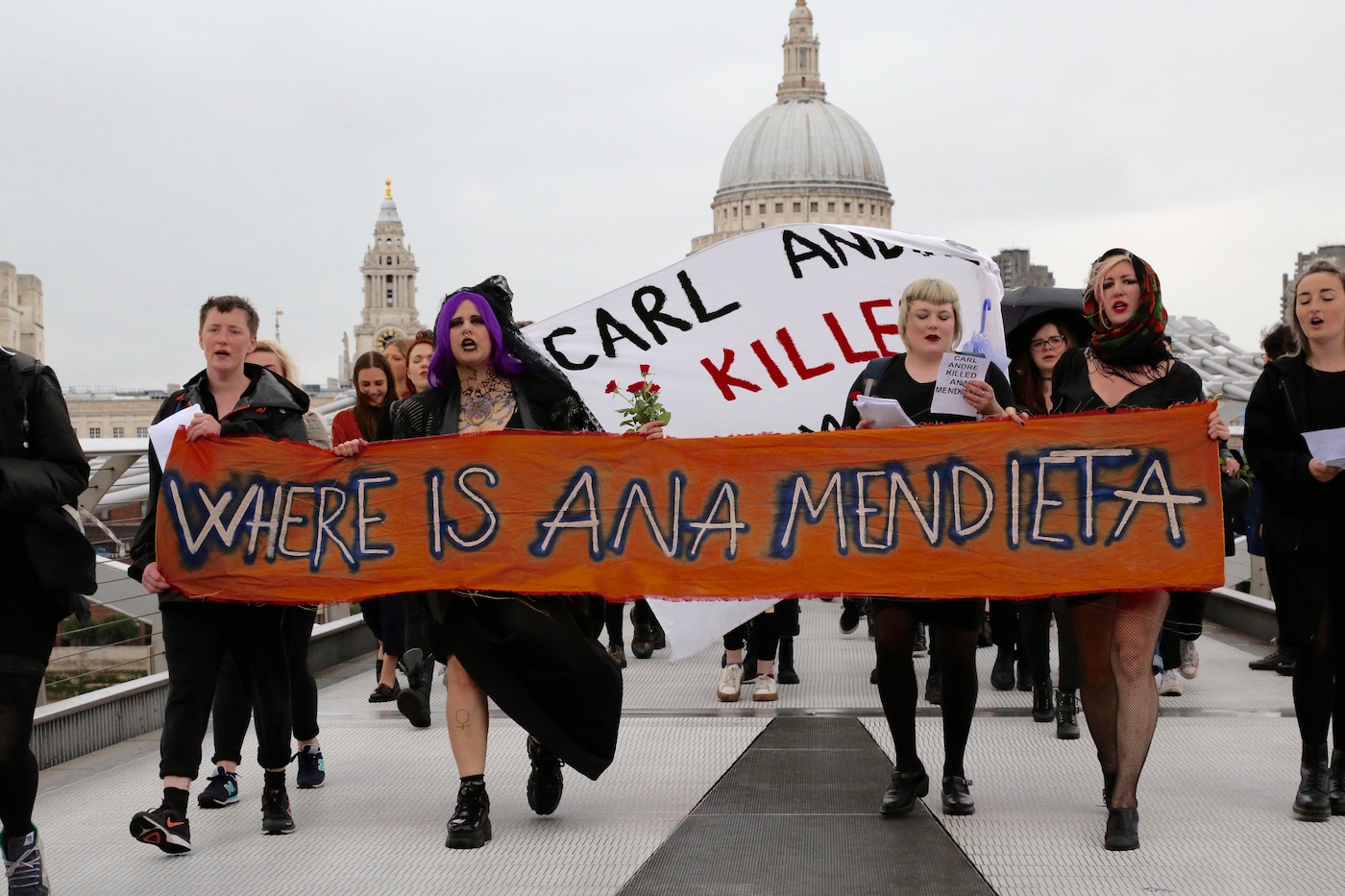

Works Cited
“Ana Mendieta Biography, Art, and Analysis of Works.” The Art Story, The Art Story, Modern Art Insight, www.theartstory.org/artist-mendieta-ana-artworks.htm#pnt_4.
“Ana Mendieta: A Retrospective.” New Museum Digital Archive, New Museum Annual Report 1988, archive.newmuseum.org/exhibitions/157.
Finkelstein, Stephanie Lynne. “Ana Mendieta – A Search for Identity.” University of Missouri-Kansas City, 2012. https://mospace.umsystem.edu/xmlui/bitstream/handle/10355/14640/FinkelsteinAnaMenSea.pdf?sequence=1
Frank, Priscilla. “The Tragic Life Of A Forgotten Feminist Artist, As Told By Her Sister.” The Huffington Post, TheHuffingtonPost.com, 9 Mar. 2016, www.huffingtonpost.com/entry/the-inexorable-lifeblood-of-forgotten-feminist-artist-ana-mendieta_us_56d8d518e4b0000de403fb70.
Gutierrez Calvache, Divaldo , and Jose B Gonzalez Tendero. “Arte rupestre comtemporáneo. Ana Mendieta y la cueva del águila.” Arte rupestre comtemporaneo Ana Mendieta Cueva del Águila Cuba, www.rupestreweb.info/cuevadelaguila.html.
Herzberg, Julia A. “Ana Mendieta, the Iowa Years: A Critical Study, 1969 through 1977.” City University of New York, CUNY, 1998.
Mar Lopez-Cabrales, Maria del . “Laberintos corporales en la obra de Ana Mendieta.” Universidad Complutense de Madrid, 2006,
O’Hagan, Sean. “Ana Mendieta: death of an artist foretold in blood.” The Observer, Guardian News and Media, 21 Sept. 2013, www.theguardian.com/artanddesign/2013/sep/22/ana-mendieta-artist-work-foretold-death.
Patrick, Vincent. “A DEATH IN THE ART WORLD.” The New York Times, The New York Times, 9 June 1990, www.nytimes.com/1990/06/10/books/a-death-in-the-art-world.html?scp=1&sq=a death in the art world&st=cse.
“Return to Cuba: Rupestrian Sculptures.” Guggenheim, 20 Feb. 2015, www.guggenheim.org/artwork/5220.
Sauers , Jenna. “Portrait of the Artist, Ana Mendieta, Iowa City, 1973.” The Village Voice, 19 Sept. 2017, www.villagevoice.com/2017/09/19/how-ana-mendieta-made-art-out-of-the-things-we-try-not-to-see/.
Voien, Guelda. “The Remarkable Story of a Rebel Artist, Her Mysterious Death and Cult Resurgence.” Observer, 7 Apr. 2017, observer.com/2015/11/three-decades-after-her-sordid-death-ana-mendietas-work-is-finally-getting-its-due/.
Weinman, Sarah. “In death, an artist and a young woman meet.” The Guardian, Guardian News and Media, 21 Apr. 2016,
YouTube, YouTube, 19 May 2014, www.youtube.com/watch?v=EznmPOhPnK4. The No Wave Feminist Taskforce
Voien, Guelda. "The Remarkable Story of a Rebel Artist, Her Mysterious Death and Cult Resurgence." The Observer 7 Apr 2017. Web. 16 Nov 2017. Lopez-Cabrales, Maria. "Laberintos corporales en la obra de Ana Mendieta." Universidad Complutense de Madrid . (2006. ). Web. 21 Nov 2017.O'Hanagan, Sean. "Ana Mendieta: death of an artist foretold in blood.." The Observer Guardian News, 21 Sep 2013. Web. 17 Nov 2017. Herzberg, Julia P. "Ana Mendieta, the Iowa Years: A Critical Study, 1969 through 1977.." City University of New York .. no. 1: 1998. .. CUNY. Web. 11/15/2017Finkelstein, Stephani Lynne. "Ana Mendieta - A Search for Identity." niversity of Missouri-Kansas City, n/a. (2012. ). Web. 15 Nov 2017.